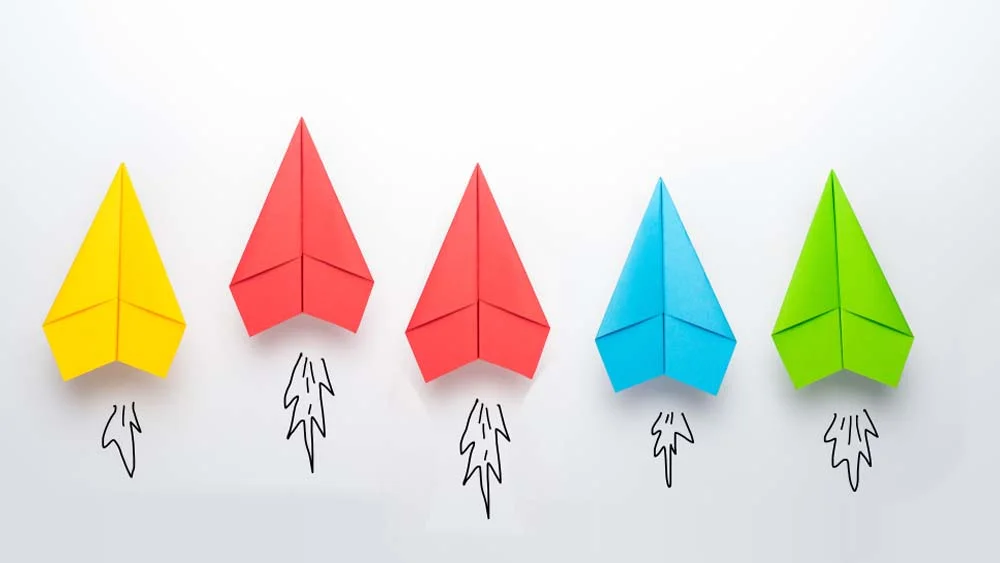Designs are the core of luring people in to see what a specific thing offers. User experience designs are of extreme importance when it comes to app development. Some common UX design mistakes that can slow down an app’s progress are a hard-to-understand layout, a slow loading speed, a lack of features that make the app easier to use, and inconsistent branding. Also, not testing the app with users and getting their feedback can lead to a bad experience for them, which can hurt the app’s success in the long run.
It’s also important to avoid cluttering the app with too many features or options, which can overwhelm users and make it difficult for them to navigate. Another mistake to avoid is using too many pop-ups or notifications, which can be annoying and disrupt the user’s experience. Finally, failing to optimize the app for different screen sizes and devices can lead to a poor user experience on certain devices, which can limit the app’s potential audience.
The Dangers of UX Design Mistakes
There are several dangers that are presented by UX design mistakes in your app. It’s not just about having a weak design; it’s about how that design is affecting your users’ experience negatively, which can lead to a decrease in user engagement and retention. When users run into design problems, they might get frustrated and lose interest in your app. This could lead to a drop in usage and, in the end, revenue. We’ll show you some of the most common UX designs and their outcomes below, and then we’ll give you some quick tips on how to avoid making such mistakes. Here are some common mistakes that you could make when creating your app’s UX design:
Lack of Aim or Understanding of Users’ Needs
User needs should be the sole focus of any project, and neglecting them can have a major impact on progress. Understanding user needs is key to developing your product or service. It’s important to create personas, which are effectively user proxies, in order to cater to different kinds of users. This will make it easier to figure out what users want, need, and do, which will help you come up with a better design solution. If your users experience how familiar your app is to them and express that their experience with your app is positive, then you’ll have the app boosted in no time.
Copying Your Competitors
Taking references is good and all, but there is a fine line between using your rivals’ products as a reference for your own and copying them. Lack of uniqueness or originality will cause a massive drop in your app’s progress. what you offer through your app’s UX design should reflect your app’s aim and value. If that didn’t happen, users would simply move on from your app to another one, maybe even the one you copied. You should avoid such a fatal mistake when it comes to developing your app. Also, if you want a great and unique UX design, think about the parts and features of your app that make it what it is, and use that as a starting point.
Unclear CTA and Navigation System
One of the most common mistakes in UX design is a call to action (CTA) and navigation system that is hard to understand. A good CTA should be crystal clear to the user, with consistent design across all pages. Poor user experience will lead users to click away quickly, which can create drop-off rates and affect your conversion rate. Always consider how the journey through your UI will look on different screens in order to optimize functionality and satisfaction for your users.
Reduced Loading Speed
Buffering—nothing is worse than that word. A slow speed at loading can completely ruin your app’s progress. The loading speed of your app is one of the most important factors in keeping it on demand. Let us assume the “worst case scenario” assumption. So you have a beautifully functioning app with a very unique and distinguished value proposition, but your app barely loads. This could lead to something called “user frustration.” If your users get frustrated, you’ll have a major problem on your hands. Why? you’re asking? because frustration will lead to boredom, which will eventually increase the rates of uninstallation of your app from your users’ mobile phones.
Overwhelming Users With Asking for Too Much Information
What does that mean? Let us tell you. Whenever a user accesses your app for the first time, they’ll have to sign up for it in order to get familiarized with the process and develop a profile for themselves. When that happens, your users will want to finish the such a process quickly. They don’t need to enter their full names up to their great-grandfathers, for example, or add more than one email. Consider providing multiple options for your users to select from; for example, some people dislike sharing their phone numbers with anything internet-related. Give such people the option to type down their email instead, and vice versa with other personal information about your users.
A Complicated UX Design Will Guarantee Your App’s Failure
We don’t mean to be pessimistic; it’s a simple process of stating facts here. Even professional UX designers have been known to make mistakes like this. Users often run into apps that have too many elements, like buttons, text fields, and graphics. Users find it confusing and uncomfortable due to the crowded screen. Because of this, we suggest that you keep the user experience of your app simple and only put the most important things on each page. The most well-known apps, including LinkedIn, Instagram, Airbnb, Uber, and others, give their consumers straightforward user interfaces.
Overusing App’s Push Notifications
Your app’s push notifications can be very useful and a great necessity. They can keep users updated, alerted, and always up to date with the latest changes or news. Unfortunately, overusing such a feature will simply annoy your users. Some people stop using certain apps because the developers made the mistake of overburdening their users with push notifications. We advise you to keep your push notifications within a reasonable number per day, week, or month. That is to avoid developing an app that nags users into using it or checking it out.
Quick Tips to Avoid All Common UX Design Mistakes
Here are some quick tips to avoid common UX design mistakes:
- Conduct user testing and get feedback early and often
- Keep the design simple and easy for users to navigate
- Avoid cluttering the app with too many features or options
- Optimize your app for different functionalities
- Use clear call-to-action buttons and consistent navigation throughout the app
- Limit the number of push notifications and provide users with control over them
- Don’t copy your competitors – focus on creating a unique and original design that reflects the value of your app
Concluding Thoughts
To sum it up, creating a great UX design is key to keeping users engaged and interested in your app. You can make a design that is both unique and effective by avoiding common mistakes like ignoring user needs, copying competitors, and adding too many features. Remember to always listen to your users and make adjustments based on their feedback, as this can help you create a better user experience and ultimately lead to a more successful app. With nandbox, we can assist you in creating a flawless app in a very short period of time. You can learn how to build an app from scratch through our documentation section. Also, you can read more about how to build an app for beginners on our blog page. Sign up now and turn your ideas into successful projects.








